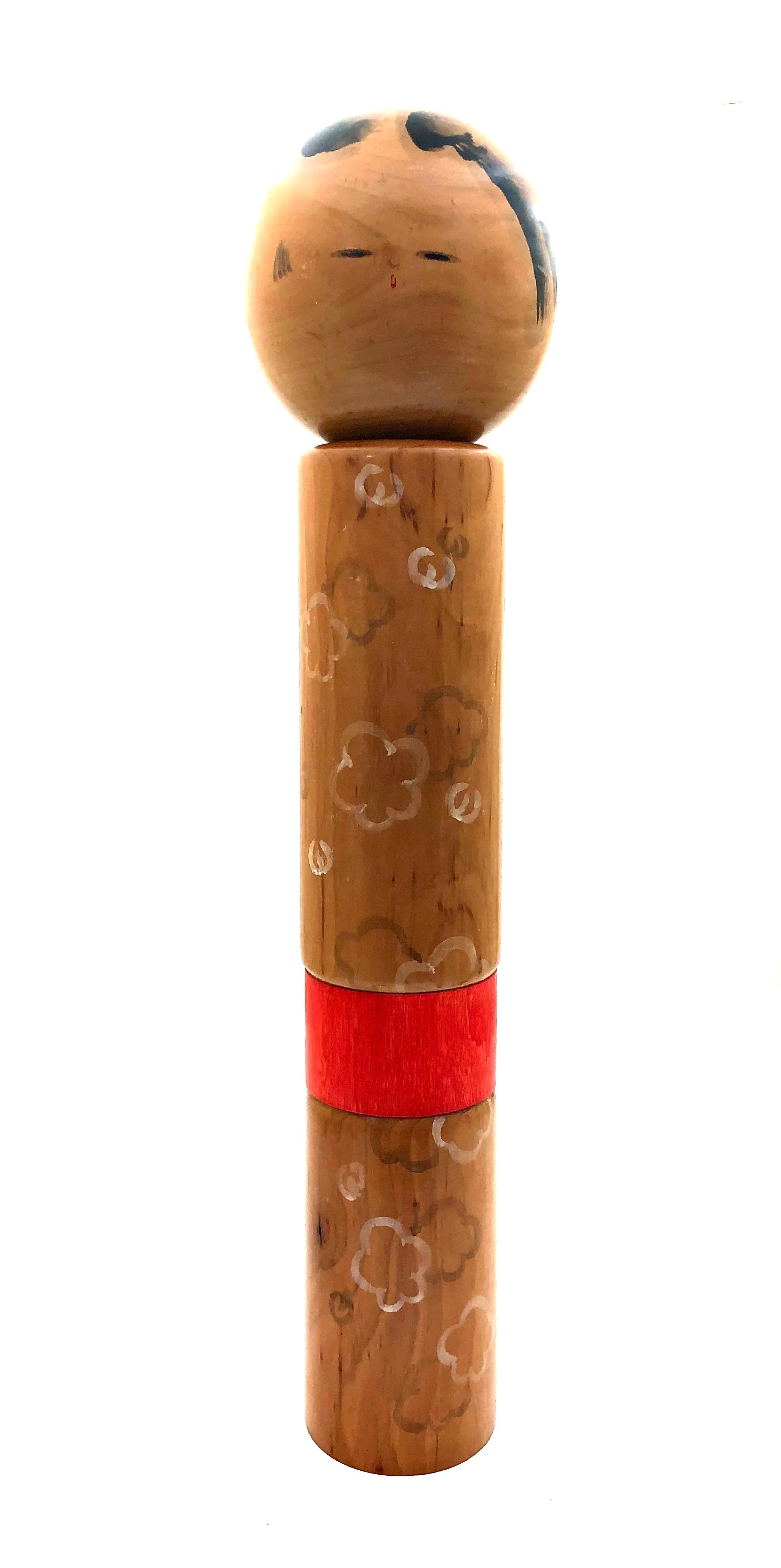
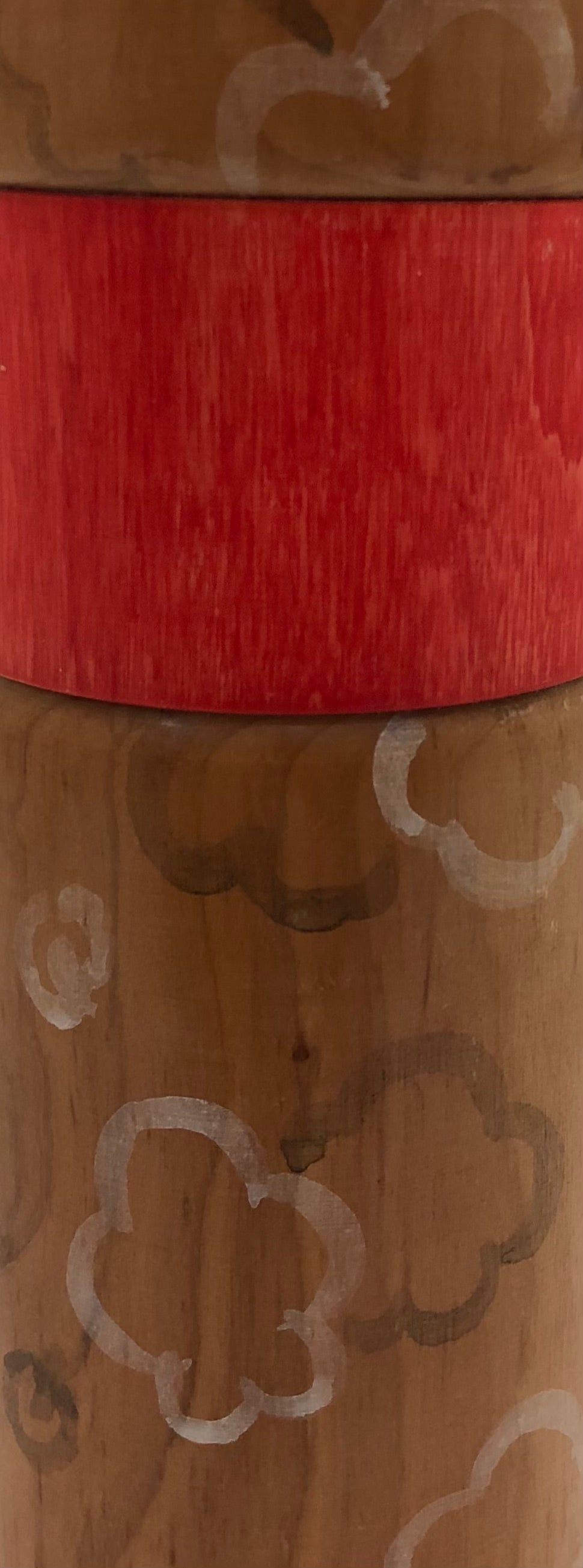
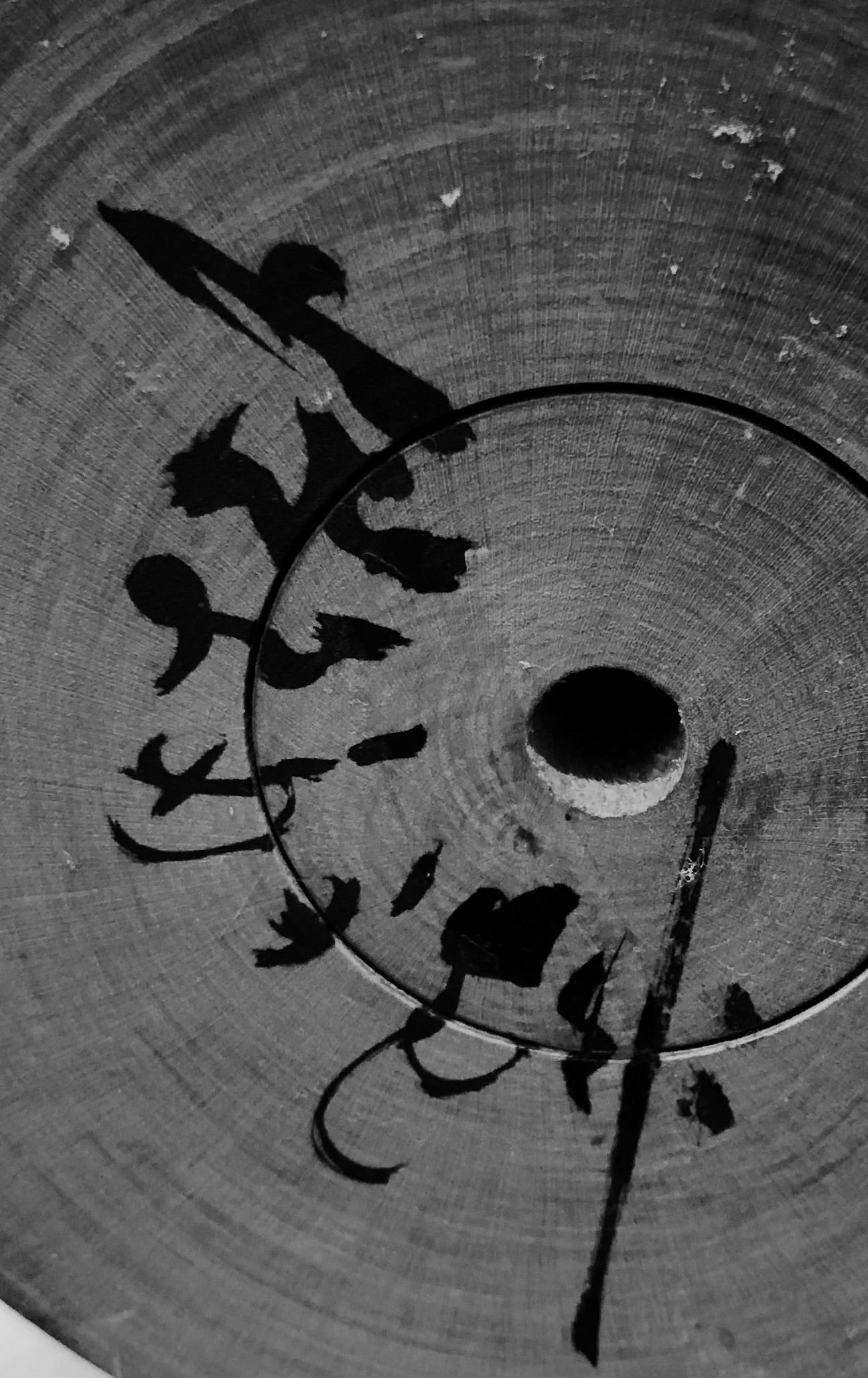
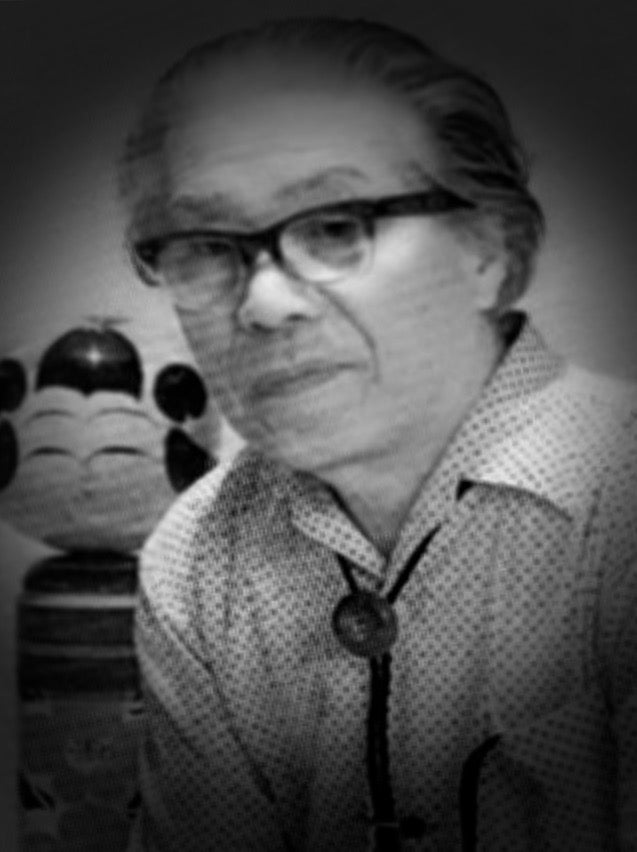
RARE Vintage Sosaku Kokeshi entitled: "Omeno.ka | Fragrance of Plum” by Kiyohara, Takao
Dimensions: 23-0”h
This is an exceptionally large, substantial, and rare doll that represents one of a few this size by this artist and is made of one piece of wood turned on the lathe. Minimal accents of white plum blossoms are incorporated into the body. The red obi highlights the beautiful natural wood. The most interesting feature is the face, which departs from his previous models with a very unusual representation of hair. All of his dolls are beautifully painted on high-quality wood, which has been waxed using ‘Rōsoku no Rō’, which is similar to candle wax and is commonly used as the finish for Kokeshi. Signed on the bottom by the artist. The doll was published in Sosaku Kokeshi: Celebrating the Major Artists of the Creative Movement, 2022 by Evans & Wolf.
Condition: Superb outstandingly, exceptional, impressive, and beautiful condition. No chips, cracks, breaks, missing pieces, or restoration, and retains its original details and finish. The piece meets all the standards of the collectible Sosaku Kokeshi.
For additional information on the artist/family go to: https://mingeiarts.com/collections/artisan-woodworker-kiyohara-takao-1916
Kiyohara-san is one of the most popular and prolific of the creative Kokshi artists and began creating dolls after serving as a pilot in the Japanese/American war. He was considered a transitional artist, due to the fact that many of his dolls resemble traditional Tougatta or Yamagata dolls. His dolls are artistically and minimally decorated. He was awarded the Minister’s Prize four times along with the Enterprise Agency top prize on two occasions.
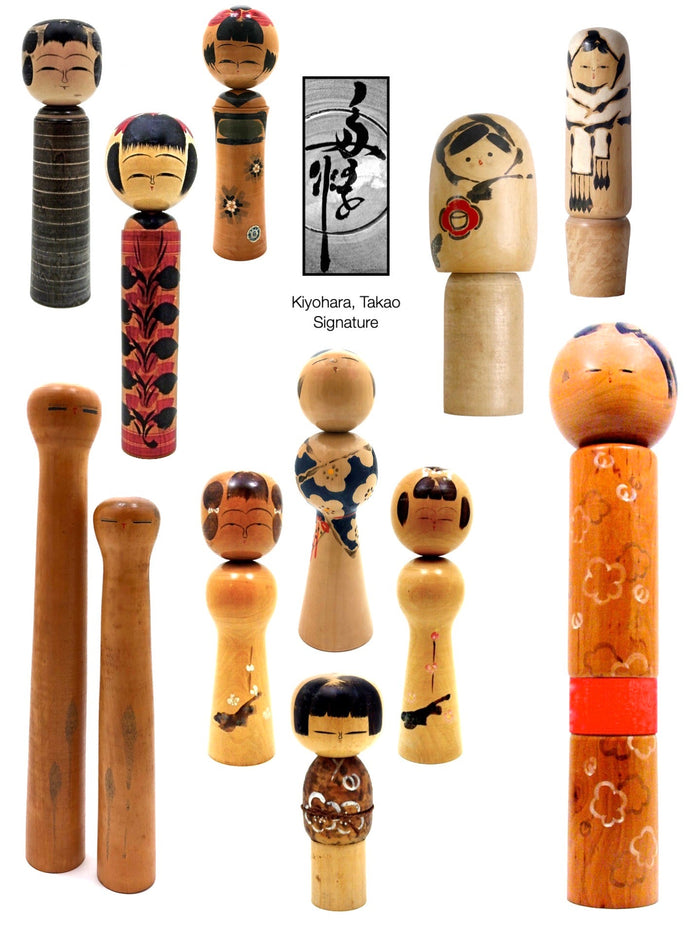
Artisan
Woodworker: Kiyohara, Takao
1916-
Biographical History:
Kiyohara-san is one of the most popular and prolific of the creative Kokeshi artists and began creating dolls after serving as a pilot in the Japanese/American war. He was considered a transitional artist because many of his dolls resemble traditional Tougatta or Yamagata dolls. His dolls are artistically and minimally decorated. He was awarded the Minister’s Prize four times along with the Enterprise Agency top prize on two different occasions. Kyohara is an artist who defies classification, while he is a well-established and popular Kokensi doll maker who at the beginning of his career, was known as a “Transitional” artist. Little is known about whom he might have studied under, or for that matter, where he operated his studio. Most sources agree that since he is not included in any books on the traditional artists, nor is there mention of him with other well-known creative artists, he has been accorded his own place: that of the "mystery man". He has been awarded the MIND Award, (Ministry of Industry).
Collector's note – descriptive qualities, standard characteristics & ornamentation styles:
Kiyohara-san’s pieces are minimally ornamented with seasonal white and pink cherry blossoms, plum blossoms, or simple stripes executed using a traditional Rokuro Moyo technique. The unique key characteristic of Kiyohara pieces is the head and face which are traditional in inspiration, with expressive eyes and a simple impression of the hair with a red bow on the top, supporting the concept of femininity. All of his nose and red mouth complete the expression in defining the doll. He employs simple turning techniques in either a straight fashion or a bulbous shape which aid in defining the body of each doll, and are directly inspired by Traditional Kokeshi forms. He also has no problems in creating both simple and undecorated forms of one-color palettes, as well as very tall Kokeshi made of two pieces joined by a dowel of which one was named “Omeno.ka (Fragrance of the Plum). All of his dolls are beautifully painted on high-quality wood, which has been waxed using ‘Rōsoku no Rō’, similar to candle wax and is commonly used as the finish for Kokeshi.
Explore & Learn More about Woodworker: Kiyohara, Takao